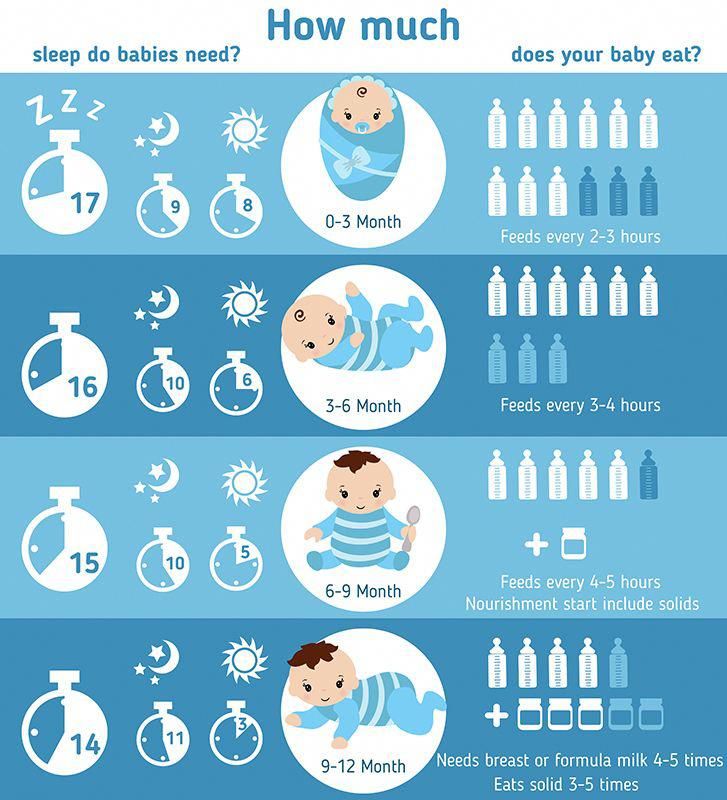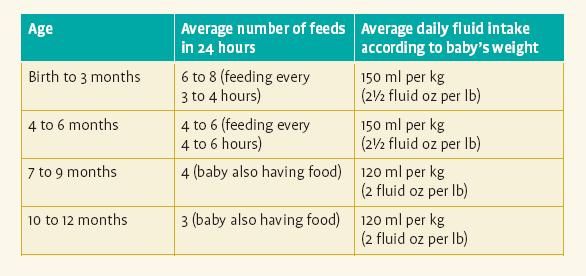How many times should i feed my baby a day
How Often and How Much Should Your Baby Eat?
By: Sanjeev Jain, MD, FAAP
One of the most common questions new parents have is how often their baby should eat. The best answer is surprisingly simple: in general, babies should be fed whenever they seem hungry.
How do I know when my baby is hungry?
For babies born
prematurely or with certain medical conditions, scheduled feedings advised by your pediatrician are best. But for most healthy, full-term infants, parents can look to their baby rather than the clock for hunger cues. This is called feeding on demand, or
responsive feeding.
Hunger cues
A hungry baby often will cry. But it's best to watch for hunger cues before the baby starts crying, which is a late sign of hunger and can make it hard for them to settle down and eat.
Some other typical hunger cues in babies:
Licking lips
Sticking tongue out
Rooting (moving jaw and mouth or head in search of breast)
Putting his/her hand to mouth repeatedly
Opening her mouth
Fussiness
Sucking on everything around
It is important to realize, however, that every time your baby cries or sucks it is not necessarily because he or she is hungry. Babies suck not only for hunger, but also for comfort; it can be hard at first for parents to tell the difference. Sometimes, your baby just needs to be cuddled or changed.
General guidelines for baby feeding
It is important to remember all babies are different―some like to snack more often, and others drink more at one time and go longer between feedings. However, most babies will drink more and go longer between feedings as they get bigger and their tummies can hold more milk:
Most newborns eat every 2 to 3 hours, or 8 to 12 times every 24 hours. Babies might only take in half ounce per feeding for the first day or two of life, but after that will usually drink 1 to 2 ounces at each feeding. This amount increases to 2 to 3 ounces by 2 weeks of age.
At about 2 months of age, babies usually take 4 to 5 ounces per feeding every 3 to 4 hours.
At 4 months, babies usually take 4 to 6 ounces per feeding.

At 6 months, babies may be taking up to 8 ounces every 4 to 5 hours.
Most babies will increase the amount of formula they drink by an average of 1 ounce each month before leveling off at about 7 to 8 ounces per feeding. Solid foods should be started at about 6 months old.
Concerns about overfeeding or underfeeding your baby
Too full?
Babies are usually pretty good at eating the right amount, but they can sometimes take in more than they need. Infants who are bottle feeding may be more likely to overfeed, because drinking from a bottle may take less effort than breastfeeding.
Overfed babies can have stomach pains, gas, spit up or vomit and be at higher risk for obesity later in life. It's better to offer less, since you can always give more if your baby wants it. This also gives babies time to realize when they're full.
If you are concerned your baby wants to eat
all the time―even when he or she is full―talk with your pediatrician. Pacifiers may be used after feeding to help sooth healthy-weight babies who like to suck for comfort, rather than nutrition. For babies who are breastfed, it's best to wait to offer pacifiers until around 3 to 4 weeks of age, when breastfeeding is well-established.
Pacifiers may be used after feeding to help sooth healthy-weight babies who like to suck for comfort, rather than nutrition. For babies who are breastfed, it's best to wait to offer pacifiers until around 3 to 4 weeks of age, when breastfeeding is well-established.
Trouble gaining weight?
Most babies will double their birth weight by 5 months of age and triple their birth weight by their first birthday. If your baby is having trouble gaining weight, don't wait too long between feeding―even if it means waking your baby. Be sure to talk with your pediatrician about how often and how much to feed your baby.
How do I know if my baby is getting enough to eat?
Daily diapers
A newborn's
diaper is a good indicator of whether he or she is getting enough to eat. In the first few days after birth, a baby should have 2 to 3 wet diapers each day. After the first 4 to 5 days, a baby should have at least 5 to 6 wet diapers a day. Stool frequency is more variable and depends whether your baby is
breastfed or formula fed.
Growth charts
During regular health check-ups, your pediatrician will check your baby's weight and plot it on a growth chart. Your baby's progress on the growth chart is one way to tell whether or not they are getting enough food. Babies who stay in healthy growth percentile ranges are probably getting a healthy amount of food during feedings.
Remember
Talk with your pediatrician if you have any questions or concerns about your baby getting the right amount to eat.
More information:
- Making Sure Your Baby is Getting Enough Milk
- Amount and Schedule of Formula Feedings
- Is Your Baby Hungry or Full? Responsive Feeding Explained (Video)
- Remedies for Spitty Babies
- Ask the Pediatrician: With the baby formula shortage, what should I do if I can't find any?
- Ask the Pediatrician: How should we feed our baby if we're running low on money?
-
Airplane Choo Choo: A Feeding Guide for Children (National Dairy Council)
About Dr.
 Jain:
Jain:
Sanjeev Jain, MD, FAAP, is a Clinical Associate Professor of General Pediatrics and Adolescent Medicine at the University of Wisconsin School of Medicine and Public Health. Within the American Academy of Pediatrics, he is a member of the Section on International Child Health and the Wisconsin State Chapter.
The information contained on this Web site should not be used as a substitute for the medical care and advice of your pediatrician. There may be variations in treatment that your pediatrician may recommend based on individual facts and circumstances.
With the baby formula shortage, what should I do if I can't find any?
Since the outbreak of
COVID-19, there have been significant shortages of
infant formulas nationwide. Current shortages have been largely caused by supply chain issues and the recent
recall of several baby formula products over contamination concerns.
Here are some tips on finding baby formula during the shortage, and what you may safely consider if you absolutely can't find any.
Keep in mind, this advice is strictly during this current URGENT formula shortage. If you have any concerns about your baby's nutrition, please talk with your pediatrician.
What if baby formula is out of stock everywhere I look?
Call your pediatrician if you can't formula you need for your baby. They may have samples in stock, connections to other local organizations or ideas of other places to call, such as your local WIC clinic. Also consider:
- If you can afford it, buy formula online until store shortages ease. Purchase from well-recognized distributors, grocers, and pharmacies rather than individually sold or auction sites.
- Check social media groups. There are groups dedicated to infant feeding and formula, and members may have ideas for where to find formula. Make sure to check any advice with your pediatrician.

This formula crisis is hitting families who are already grappling with stresses of parenting young children in a pandemic. It can be tempting to buy as much formula as possible right now, but the American Academy of Pediatrics (AAP) advises buying no more than a 10-day to 2-week supply of formula to help ease shortages.
I found small amounts of several different baby formulas. What is the best way to switch among the brands?
For most babies, it is OK to switch to any available formula, including store brands. It is likely that your baby will do just fine with different formulas as long as they are the same type. (The exception would be if they are on certain specialty formulas for medical reasons. Read more below.) If your baby does not like the taste or has a hard time tolerating a different formula, you may want to try gradually introducing small amounts of the new formula mixed with the usual formula. Slowly increase the amount of the new formula.
Be patient, since it may take some time for your baby to get used to a new formula. If you have questions about whether your baby is tolerating the new formula, call your pediatrician.
My infant needs a specialty metabolic baby formula, but I can't find any. What should I do?
Abbott is releasing limited quantities of Similac PM 60/40 and other metabolic or amino-acid formulas for babies in urgent need. Your pediatrician's office can fill out a request and, if it is approved, the formula can be shipped to your home. Talk to your pediatrician about safe, comparable specialty formulas for your baby.
Only one brand of baby formula is covered under the WIC program, but I can't find any. What should I do?
Most states are allowing parents who use WIC benefits to buy other brands of baby formula or different sizes and forms like ready-to-feed formula. To find out what your state is allowing, you can check this map.
I have a 3-month-old infant and can't find my usual baby formula.
 What should I do?
What should I do?
This is a very difficult problem. If you can find another similar formula, it's OK to make the switch. If you use a special formula for allergies or other special health needs, the North American Society For Pediatric Gastroenterology, Hepatology & Nutrition provides a list of comparable formulas here.
Can I add extra water to formula and give my baby a multivitamin to make up the nutrients?
This should never be done. Adding extra water to formula can dilute the levels of protein and minerals, and lead to low sodium levels in the blood and other electrolyte disorders that may require hospitalization. Always follow label instructions or those given to you by your pediatrician.
Can I make my own baby formula? I've seen a recipe online using evaporated milk that people say was used safely in the 1940s.
Evaporated milk, also known as unsweetened condensed milk, is a form of concentrated milk. Mixing it with water can cause contamination or an incorrect balance of nutrients.
For similar reasons, AAP does not recommend using homemade baby formula. Although homemade formula was used in the past, it also came with many risks to infants. Online recipes for homemade baby formula have significant safety concerns regarding contamination and nutrient concentration. Using homemade baby formula can harm your infant. Some babies have been hospitalized from reported use of homemade formulas.
What is the earliest age I can start giving my baby solid food to stretch my formula supply?
Solid foods should not be used to stretch baby formula supply. Formula contains all of the nutrients young babies need, while solid foods may not. Infants generally are ready to eat solid food when they are about 6 months old, but it depends on their stage of development. Talk with your pediatrician about when your baby may be ready for solid foods.
Is it safe to get breast milk from a friend or online group?
We can't know for sure whether breast milk from a friend or online group is safe. It is better to check with a local milk bank that is accredited through the Human Milk Banking Association of North America. To find an accredited milk bank, check here.
It is better to check with a local milk bank that is accredited through the Human Milk Banking Association of North America. To find an accredited milk bank, check here.
I heard the government is importing baby formula from other countries. Is that safe?
The Food & Drug Administration (FDA) is working to verify safe production standards, labeling and shipping of some imported baby formula brands not previously sold in the United States. European baby formulas are regulated by the European Food Safety Agency similar to how the FDA regulates U.S. formula, and are highly reliable.
The most important safety consideration if using imported formulas is to read the label carefully. Many imported formulas use milliliter (ml) rather than ounce (oz) in the mixing directions. If your baby bottles don’t have ml scale markings, you may have to convert from ounces to milliliters. Too much or too little water used with powder or concentrate is dangerous for your baby.
It is also important to select the right imported formula for your baby’s age. Imported formulas may be labeled as "Stage 1" (for the first six months after birth, but generally can be used throughout the first year), and "Stage 2" (just for babies who are over 6 months of age).
Can toddler "formula" substitute for regular baby formula?
Toddler drinks, often found in the formula aisles, are not recommended for infants. However, if you absolutely have no other choice, these products can be safe for a few days for babies who are close to a year of age.
Can I give my full-term baby premature formula?
Formulas designed for babies who were born premature (and have "catch-up" growth to do) can safely be used for a few weeks to feed full-term babies if nothing else is available.
Is cow's milk a safe alternative to baby formula?
If your child is
older than 6 months of age and is usually on regular formula (not a specialty product for allergies or other special health needs), this may be an option. In a pinch, you could feed them whole
cow's milk for a brief period of time (no more than a week).
In a pinch, you could feed them whole
cow's milk for a brief period of time (no more than a week).
This is not ideal and should not be done for more than one week. One concern with giving cow's milk to a baby who is 7-12 months old on a long-term basis is that it does not contain enough iron. This can lead to anemia. If you have to use cow's milk to feed your infant, ideally do so for as short a time as possible. It's also important to give your baby plenty of iron-containing solid foods, such as baby food made with meat or iron-fortified cereals.
If you need to give your baby whole cow's milk for a week during the shortage, talk with your pediatrician.
What about feeding my baby goat's milk?
Remember that raw goat's milk, like raw cow's milk, is not safe for a baby since it has not been pasteurized to kill harmful bacteria. But some goat milk-based baby formulas made in other countries are among those being imported and distributed in the United States to help ease the national shortage.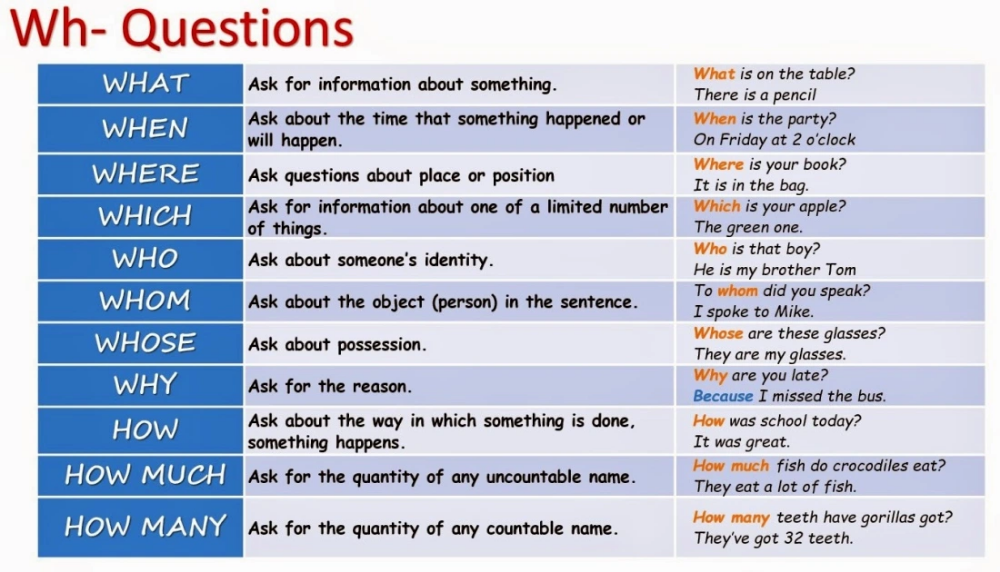 These are considered safe.
These are considered safe.
Can I use plant-based milk instead of baby formula if needed?
Plant-based milk alternatives generally are not recommended for babies under a year of age. Soy milk may be an option to give babies who are close a year old during the shortage, but not for more than one week. If you can't find formula and have to use soy milk, be sure to buy the kind that is fortified with calcium and vitamin D. Make sure to change back to formula as soon as some is available. Be especially careful to avoid almond milk or other plant milks as these are often low in protein and minerals. Talk with your pediatrician if you are considering using plant-based milk.
How long can baby formula be used past a "best by" date?
Generally, formula should not be used past the "best by" date because it may no longer be safe or have the required levels of nutrients.
Remember
This is a stressful and scary time for families. Your pediatrician is a resource who can help advise on the best and safest ways to feed formula-fed formula babies during the shortage.
More information
- Ask the Pediatrician: Why are we seeing baby formula brands on the shelves from companies I haven't heard of before?
- How to Safely Prepare Formula with Water
- How Much and How Often Should Your Baby Eat?
- Choosing a Baby Formula
- Low Milk Supply: 5 Steps That Can Help
- North American Society For Pediatric Gastroenterology, Hepatology & Nutrition Tools for Infants and Children Affected by Formula Shortages
-
Helping Families Find Formula During the Infant Formula Shortage (HHS.gov)
How Much Should a Newborn Baby Eat
Search Support IconSearch Keywords
Home ›› How Much Milk Should a Newborn Baby Drink?
Home ›› How much milk should a newborn baby drink?
↑ Top
Like every new mom, you're probably wondering, "How often should a newborn eat?" and “How many milliliters does a newborn baby drink at a time?”. A mother's body is designed to provide her baby with all the nutrients she needs, but every mom needs practical advice and confidence when it comes to how much milk a newborn should drink.
A mother's body is designed to provide her baby with all the nutrients she needs, but every mom needs practical advice and confidence when it comes to how much milk a newborn should drink.
Whether you are breastfeeding, bottle feeding or a combination, here you will find all the information you need to know about how much food your baby needs to grow and develop properly.
Signs indicating that the child is hungry
Every mother has a wonderful maternal instinct, but we cannot guess the child's desires from the first time. Over time, you will learn your child's unique gestures and body movements, as well as signs that he is hungry. In the meantime, here are some of the most common signs that a child is hungry:
- turns head towards your breast or bottle;
- clenches;
- puts pens in mouth;
- pouts, smacks or licks lips.
If your child is showing any of these signs, they are probably trying to tell you it's time to eat. Ideally, your baby should be fed on demand when he is hungry. If you're breastfeeding, on-demand feeding is a good way to keep your milk supply going as your body will naturally respond to your baby's needs and continue to produce the required amount of milk. Bottle-feeding on demand can also be beneficial for your baby, as it allows him to self-regulate his feeding needs.
Ideally, your baby should be fed on demand when he is hungry. If you're breastfeeding, on-demand feeding is a good way to keep your milk supply going as your body will naturally respond to your baby's needs and continue to produce the required amount of milk. Bottle-feeding on demand can also be beneficial for your baby, as it allows him to self-regulate his feeding needs.
How much breast milk should a newborn drink?
So, how much should a newborn baby eat? A remarkable feature of each child is its uniqueness, so it would be wrong to feed the baby strictly according to the instructions. Don't panic if the recommendations below don't fit your own feeding schedule, but please contact your healthcare provider or pediatrician if you have any questions.
Although every baby is different, newborns typically eat every two to three hours, for a total of 8 to 12 meals a day.
How many milliliters does a newborn baby drink? At the very beginning, your body will only produce a small amount of yellowish and thick breast milk called colostrum. This milk is an ideal source of nutrients that your newborn needs, in addition, it has many immunological components. 1
This milk is an ideal source of nutrients that your newborn needs, in addition, it has many immunological components. 1
How much milk does a newborn baby drink? Infants drink 30-60 ml per feeding, while this volume increases to 60-90 ml by two weeks of age. So don't worry if you don't feel like your body is producing much milk in those first few days after your baby is born! Feeding times will also vary, ranging from 10 to 30 minutes at the very beginning and then gradually increasing as your baby grows.
How much breastmilk the baby takes if bottle feeding
If you choose to bottle feed your baby from time to time, do so at the same intervals and for the same period of time as if you were breastfeeding. Pumping is a great option for breastfeeding your baby. It will allow you to separate from the baby if necessary and at the same time retain all the benefits of breastfeeding.
It's also important to get a bottle that helps make bottle feeding more natural for both you and your baby. For example, take a look at this Philips Natural bottle. Its wide, physiologically shaped nipple promotes a natural latch that is identical to that of a mother's breast, making it easier to alternate between bottle and breastfeeding.
For example, take a look at this Philips Natural bottle. Its wide, physiologically shaped nipple promotes a natural latch that is identical to that of a mother's breast, making it easier to alternate between bottle and breastfeeding.
Philips Avent
Natural Baby Bottle
SCF033/27General estimate /5
- Reviews reviews reviews
-{Discount -Value}
the child is full
How to understand that the child is already full? When breastfeeding or bottle feeding, look out for the following signs that may indicate that your newborn baby is full:
- baby closes his mouth;
- turns head away from bottle or breast;
- handles are not clenched and relaxed;
- falls asleep quickly.

If the baby shows signs of fullness, stop breastfeeding or bottle feeding, even if the bottle is not yet empty. 2
The right choice for you and your baby
Remember that every child is different and no one is as close to you as you are. Choose the feeding option that works best for you and your newborn, whether breastfeeding, bottle feeding, or a combination.
I understand
You are about to visit a Philips global content page
Continue
You are about to visit the Philips USA website.
I understand
How much a newborn should eat: feeding chart
0-6 months
Article
5/5 2 reviews
As soon as the long-awaited event has happened and the baby is born, the mother is faced with many questions. One of the most frequently asked: how to feed and how much should a newborn eat? Indeed, this is a very important point, since a properly selected and debugged diet allows the child to grow and develop harmoniously, promotes good health and strengthens the immune system. How to calculate the norm for a baby from the first days of life to a year?
One of the most frequently asked: how to feed and how much should a newborn eat? Indeed, this is a very important point, since a properly selected and debugged diet allows the child to grow and develop harmoniously, promotes good health and strengthens the immune system. How to calculate the norm for a baby from the first days of life to a year?
8 min. for reading Feb. 17, 2022
Contents
Listen to the experts
Calculation norms
- The first weeks of life
- One to four months
- Five to six months
- Seven to twelve months
How much breast milk a newborn should eat: table
Not enough breast milk or not at all: what to do
Norms and stages of the introduction of complementary foods
- First stage - vegetables
- Second stage - cereals
- Third stage - fruit
- Fourth stage - meat
- Fifth stage - new flavors
An example of a daily diet for a 6-8 month old baby
Frequently Asked Questions
Listen to the experts baby's age.
 All these data are usually voiced to parents during a doctor's appointment and entered into the card for further assessment of the child's condition. Comparison of the actual weight and the prescribed norms allows you to find out whether the child is eating well enough and, if necessary, to correct mistakes made during feeding. If something is not clear to you at the appointment with the pediatrician, do not be afraid to ask again and clarify. After all, only a specialist can give competent recommendations specifically for your baby, based on the results of an examination or analysis. The advice of friends, grandmothers and mothers from various forums may be good, but they do not take into account the individual characteristics and needs of your child's body. So, they may not work or even hurt.
All these data are usually voiced to parents during a doctor's appointment and entered into the card for further assessment of the child's condition. Comparison of the actual weight and the prescribed norms allows you to find out whether the child is eating well enough and, if necessary, to correct mistakes made during feeding. If something is not clear to you at the appointment with the pediatrician, do not be afraid to ask again and clarify. After all, only a specialist can give competent recommendations specifically for your baby, based on the results of an examination or analysis. The advice of friends, grandmothers and mothers from various forums may be good, but they do not take into account the individual characteristics and needs of your child's body. So, they may not work or even hurt. Be part of Nestle Baby&Me®
Each stage of a baby's development is unique and is associated with new questions from parents. Get advice from experts.
Registration
Calculation norms
1.
 First month of life
First month of life As soon as the baby is born, it is immediately brought to the mother's breast to feed. This helps to strengthen the immunity of the baby and stimulates lactation in the mother. During this period, there is still no milk in the breast, but there is a very nutritious transparent sweetish liquid - colostrum. It is released in the first two or three days after birth and supplies the child with all the necessary substances. To eat, the baby needs a few drops: on the first day of life, the small stomach holds only 7 milliliters. On the second day of life, the baby begins to eat more often. It needs to be fed on demand or every two to three hours, while the baby eats within 10-20 milliliters at one time. Thus, per day the norm will be approximately 90 milliliters. Starting from the third day after birth, the mother actively produces breast milk, the volume of which increases as the child grows. In the first week of life, the baby should eat from 50 to 80 milliliters of milk at a time, and 400 milliliters per day. At two weeks of age, the daily ration should be 20% of the weight of the newborn, and closer to a month - about 600 milliliters. It is important to note that these figures are approximate. Each baby needs its own, certain amount of milk or mixture, depending on individual characteristics: height, weight, mother's milk quality, calorie content of the mixture and the rate of development of the baby.
At two weeks of age, the daily ration should be 20% of the weight of the newborn, and closer to a month - about 600 milliliters. It is important to note that these figures are approximate. Each baby needs its own, certain amount of milk or mixture, depending on individual characteristics: height, weight, mother's milk quality, calorie content of the mixture and the rate of development of the baby.
See also: Breastfeeding: the first steps after childbirth
2. From one to four months
Every day the baby grows, gains weight and increases its daily portions of milk. Having reached the month, the baby is already eating 90-100 milliliters six to seven times a day. After one month, the norms become as follows:
- At two months, the child should eat from 120 to 150 milliliters at a time. The daily norm, therefore, is 700-800 milliliters.
- A three-month-old baby should eat between 150 and 180 milliliters. In this case, it is recommended to observe the frequency of feeding no more than six to seven times a day.

- From the fourth month, babies need 180-210 milliliters of milk or infant formula. The average amount per day is not less than 1/6 of the baby's weight.
3.Five-six months
A six-month-old child normally eats 210-240 milliliters at a time, and the total amount of food per day should be 1/7 of body weight, or 800-1000 milliliters. Also, if there are no contraindications, complementary foods are introduced from six months.
4. From seven to twelve months
During this period, a single portion of breast milk for a baby ranges from 210 to 240 milliliters. At the same time, the average amount per day is not less than 1/8 of the child's body weight. Vegetable, fruit and meat purees, dairy-free and milk porridges are introduced into the diet (if the baby is not allergic to cow's milk proteins).
Below is a table that describes in detail the daily intake of a newborn for each age up to a year.
How much breast milk should a newborn eat: table
| Child's age | The amount of milk eaten per feeding, ml | The amount of milk eaten per day, ml |
| 3-4 days | 20-60 | 200-300 |
| 1 week | 50–80 | 400 |
| 2 weeks | 60–90 | 1/5 child weight |
| 1 month | 100–110 | 600 |
| 2 months | 120-150 | 800 |
| 3 months | 150–180 | 1/6 child weight |
| 4 months | 180–210 | 1/6 child weight |
| 5-6 months | 210–240 | 1/7 baby weight (800-1000) |
| 7-12 months | 210–240 | 1/8 weight baby |
Important!
Remember that every child is unique, has individual characteristics and needs.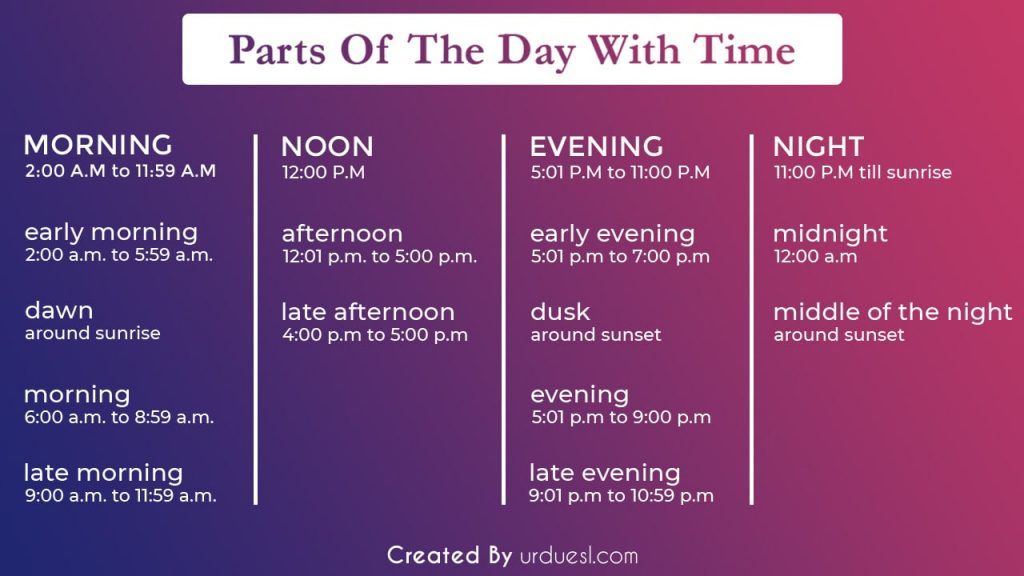 Therefore, slight deviations from the standard indicators are quite possible.
Therefore, slight deviations from the standard indicators are quite possible.
Not enough breast milk or not at all: what to do
When a baby cries after waking up, he is hungry. Modern doctors do not advise mothers to maintain any strict feeding schedule. If the mother gives the baby a breast when he asks, and the baby eats for her own pleasure and at the same time sleeps soundly and well, smiles and is not naughty, then she is full and completely satisfied.
But if the baby cries and sleeps badly, then perhaps he does not have enough milk. In this case, check if the baby is eating his age norm, and try to keep track of this indicator in the future. Found that you don't have enough breast milk? Do not worry, it is better to immediately consult a doctor. The specialist will help you find a way to support milk production and improve lactation.
If you cannot solve the problem and normalize lactation, consult a pediatrician and find the right supplemental formula for your child.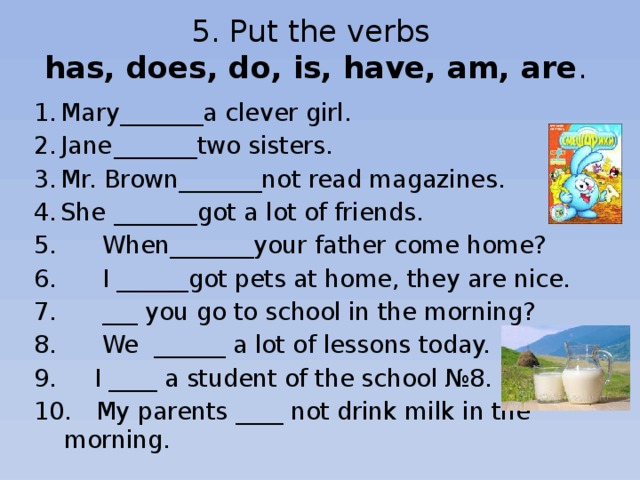 With strict observance of all the doctor's recommendations, instructions for preparation and dosages indicated on the package, the mixture makes it possible to compensate for the lack of breast milk and provide the baby with the necessary amount of nutrients.
With strict observance of all the doctor's recommendations, instructions for preparation and dosages indicated on the package, the mixture makes it possible to compensate for the lack of breast milk and provide the baby with the necessary amount of nutrients.
Important!
Even if you don't have enough breast milk to fully meet your baby's needs, try to remain on partial breastfeeding for as long as possible. After all, the ideal food for a child is mother's milk.
Complementary feeding rules and stages
As a rule, complementary foods are introduced from the age of six months. Before you start exploring new products, you should consult with your pediatrician. In general, different types of food are introduced in stages, starting with very small portions.
1.First step - vegetables
According to the World Health Organization (WHO) the best product to start with is a one-component vegetable puree, such as zucchini, broccoli, cauliflower or potatoes. If everything goes well, you can try pumpkin, carrot, pea and tomato puree a little later.
If everything goes well, you can try pumpkin, carrot, pea and tomato puree a little later.
It takes seven to ten days to fully introduce the product into the baby's diet. We start with half or a whole teaspoon once a day until breastfeeding. If there are no allergic or other adverse reactions, you can continue the introduction of this product, gradually increasing the dose to a full serving - 100-150 grams.
2. The second stage - cereals
After the introduction of vegetable puree, we recommend diversifying the baby's menu with cereals. For acquaintance, it is better to choose liquid one-component gluten-free cereals, for example, rice or buckwheat. Then you can add oatmeal or semolina.
The initial portion of porridge is half or one teaspoon. Gradually increase the portion to a full - 150 grams.
3. The third stage — fruit
We also start complementary foods with one-component low-allergenic purees, such as apple, pear, plum, banana. These products are not only tasty, but also contain vitamins and minerals necessary for the child.
Fruit purees are also introduced with caution, starting with half or a whole teaspoon. Gradually, the portion increases to 100-150 grams.
Find out more: Gerber Baby Food: Puree Range
4. Fourth Stage - Meat
Meat is an essential product for development, rich in iron and protein, which is well absorbed in the body. It is introduced in the form of a homogeneous one-component puree from dietary turkey, rabbit, chicken, veal or lamb.
At the beginning we give a try - half or one teaspoon, over time we bring the portion to 60 grams.
5. The fifth stage - new tastes
After the successful introduction of the above products, the baby forms a full-fledged varied menu. This means that a young gourmet can be introduced to new flavors that could previously provoke allergies: multi-component purees, fruit and cereal cocktails, children's snacks, pieces of fresh fruits and vegetables.
See also: Introduction of complementary foods to children with food allergies
Example of a daily diet for a baby at 6-8 months
A child from six to eight months should be given complementary foods three times a day. Further, at the age of nine to eleven months, the amount is increased to four times a day. To make it easier and clearer, check out two options for a full-fledged daily diet, which outlines what and how much a newborn should eat.
Further, at the age of nine to eleven months, the amount is increased to four times a day. To make it easier and clearer, check out two options for a full-fledged daily diet, which outlines what and how much a newborn should eat.
See also: Nutrition for a 7-month-old baby: making a menu for a baby
Popular questions
1. How to warm up breast milk?
Use the bottle warmer to warm breast milk that has been stored in the refrigerator. If this is not at hand, put a tightly closed bottle in a container of warm water and hold it there until the milk warms to body temperature - 37 ° C.
2. How often should a newborn eat?
A newborn needs to be fed every 2-3 hours, ie 10-12 times a day.
3. How much milk does a newborn eat?
During the first days of life, the baby has a very small stomach and a poorly developed sucking reflex. Therefore, for one feeding, the newborn eats 7-9 milliliters of colostrum. Breast milk from the mother appears only on the third or fourth day.
Breast milk from the mother appears only on the third or fourth day.
4. How to calculate how much a child should eat?
To understand how much a newborn should eat, you need to know his age and weight. Data for calculation: from 10 days to 1.5 months, the baby needs such an amount of food, the weight of which is approximately 1/5 of the child's body weight; from 1.5 to 4 months - 1/6, from 4 to 6 months - 1/7; from 6 to 8 months - 1/8; from 8 to 12 months - 1/9 of the body weight.
Articles on the topic:
Breastfeeding: benefits for the baby, health for the mother 12 rules of healthy nutrition for children Baby does not eat well, how to feed?
Latest reviews
Average customer rating
2 customer ratings
Snapshot of community ratings
- 5 2
- four 0
- 3 0
- 2 0
- one 0
Recommended Articles
0-6 months
Article
Buying and storing baby food
Organizing a safe and wholesome diet is an important task that is entirely the responsibility of adults. This means that every parent must know the rules for choosing, storing and feeding the smallest.
This means that every parent must know the rules for choosing, storing and feeding the smallest.
0-6 months
Article
Diet during lactation
During lactation, the mother's body uses nutrients primarily for milk production and then for itself.
0-6 months
Article
The diet of a child at 7 months: we make a menu for the baby
What should be the menu of a child at 7 months? What foods and in what quantity can be introduced into the diet at this age? When and at what intervals to give the baby to eat? We will help develop an approximate menu for a 7-month-old baby and answer the most exciting questions regarding the nutrition of a baby up to a year old.
0-6 months
Article
Feeding a nursing mother
Most of the nutrients your baby gets through breast milk come from your body's stores.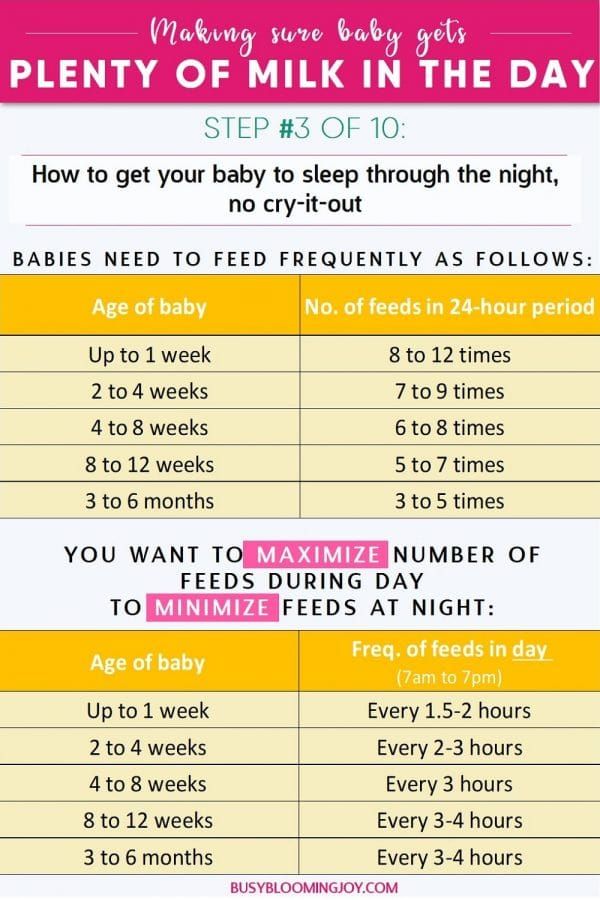 Therefore, do not forget that the menu of a nursing mother plays an important role!
Therefore, do not forget that the menu of a nursing mother plays an important role!
0-6 months
Article
Proper nutrition is the basis of future health
During the first 1000 days of a baby's life, optimal nutrition largely determines the growth and development of the child in the present and future. A balanced diet, which contains the most important macro and micronutrients, is an important investment in a child's future health.
0-6 months
Article
Major food allergens
An allergic reaction in a child, just like in an adult, occurs when the body mistakenly perceives a substance as harmful, in other words, it is a defensive reaction to an invasion that actually did not occur.
0-6 months
Article
Quantity and quality of protein in breast milk
The amount of protein in breast milk is perfectly adapted to your baby's age and needs at every stage of their development.
0-6 months
Article
Children's "check": what to ask at a physical examination of a child?
0 reviews
In the first month, the baby needs to undergo a medical examination to make sure that development is going according to plan. Check out our list of questions to help you prepare for your doctor's appointment and find out what you need to know about your newborn's health.
0-6 months
Article
When can you have sex after giving birth?
0 reviews
The resumption of intimate relationships after childbirth is an ambiguous issue. On the one hand, after such a long abstinence, you want to have sex as soon as possible, on the other hand, there are a number of nuances that prevent this. When you can have sex after childbirth and what precautions you should take - read further in the article.
When you can have sex after childbirth and what precautions you should take - read further in the article.
0-6 months
Article
How to handle visitors after childbirth
0 reviews
If you're tired of too many visitors, don't panic. Here are five of our top tips for dealing with postpartum visitors so you have time to bond with your baby.
0-6 months
Article
TOP 8 tips on how to teach a child to a nipple
0 reviews
Pediatricians disagree about whether a baby needs a pacifier. Supporters of the pacifier argue about its benefits, opponents frighten with dangerous consequences. However, there is no clear evidence of the absolute benefit or harm of this popular attribute of infancy. Therefore, parents must decide for themselves whether the baby needs a pacifier. Most moms and dads decide to use such an assistant in caring for the baby. Then the question arises, how to accustom a child to a nipple?
Therefore, parents must decide for themselves whether the baby needs a pacifier. Most moms and dads decide to use such an assistant in caring for the baby. Then the question arises, how to accustom a child to a nipple?
0-6 months
Article
How to bathe a newborn
0 reviews
The first bath of a newborn is an exciting and at the same time wonderful moment of unity between parents and child. To make sure everything goes safely and smoothly, follow the tips from our list.
0-6 months
Article
Baby development 4 months
Your baby is 4 months old.
0-6 months
Article
What Vegetables Can I Eat While Breastfeeding?
0 reviews
To be or not to be cucumbers and potatoes in the menu of a nursing mother? What vegetables can be eaten while breastfeeding, and which ones should be limited?
0-6 months
Article
How to wean a child to sleep with mom: TOP 10 ways
0 reviews
When and how to wean a child from sleeping with his mother? We analyze the main reasons for separate sleep and 10 ways to accustom the crumbs to your own bed.
0-6 months
Article
The child does not sleep at night: how to solve the problem
0 reviews
You know your baby is tired, but no matter how hard you try, restful sleep seems like a distant dream. From baby nightlights to soothing sounds for babies, here are a few tips on how to improve your baby's sleep.
0-6 months
Article
Sweating in newborns: what does it look like and how to treat it?
Baby's skin is delicate and sensitive and easily exposed to external influences. Excessive heat, high humidity lead to prickly heat in newborns. This brings a lot of suffering to the crumbs. Therefore, parents should know why it occurs and how to cure prickly heat in children.
0-6 months
Article
What to do if a newborn's tummy hurts
0 reviews
What to do, how to help if the baby is in pain in the stomach? If only he could tell you what is wrong and why.





